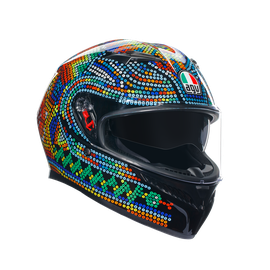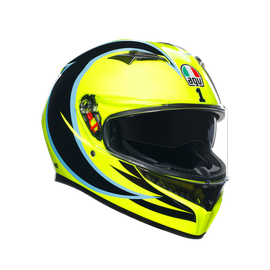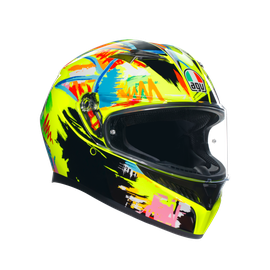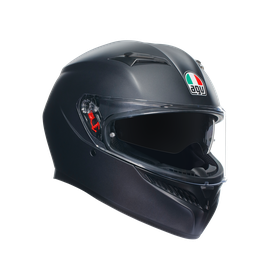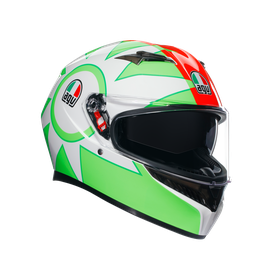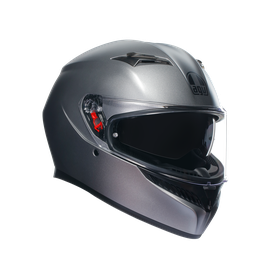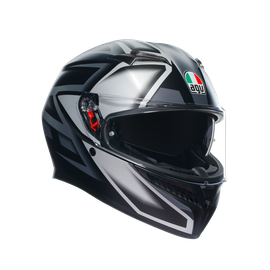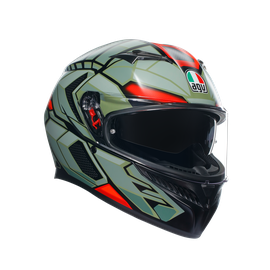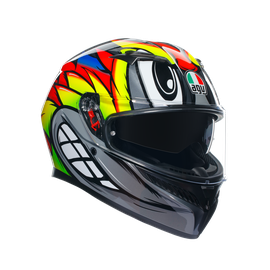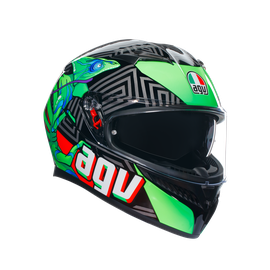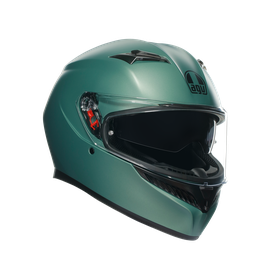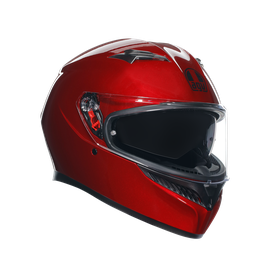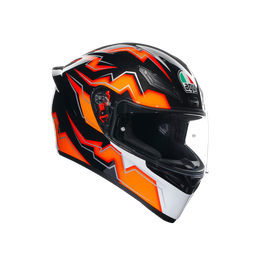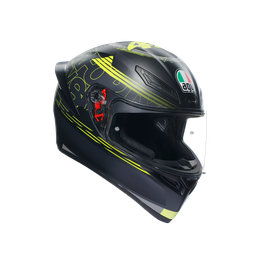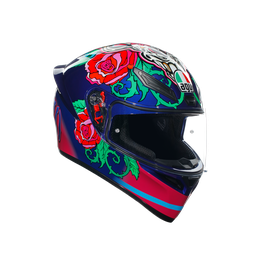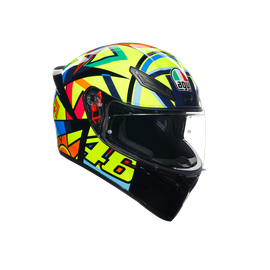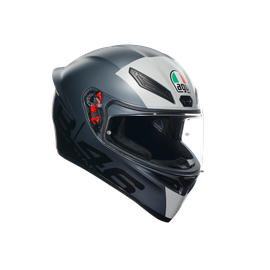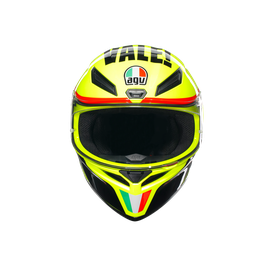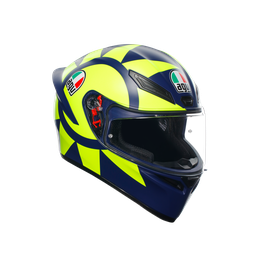
Helmets
(101 results)Safety and Style: The Motorcycle Helmet Collection
On our site, we offer an exclusive selection of AGV motorcycle helmets, a premium brand renowned for their excellence in safety and design. With a range of helmets designed to meet the specific needs of every rider and models intended for every riding style - racing, sport, touring, urban, and off-road - our collection represents the top of the range in terms of protection, comfort, and style.
Versatility and Comfort: Motorcycle Helmets for Every Riding Style
Our full-face motorcycle helmets offer maximum safety and are ideal for racing and sport enthusiasts who demand the most from their performance, without compromise. For those who prefer versatility, our modular helmets combine the protection of a full-face with the convenience of a jet, perfect for touring or daily use in the city. And for those who love to feel the wind on their face, our jet motorcycle helmets are the ideal choice for a freer and more relaxed urban or off-road riding experience.
Innovation and Performance: Unique Features
Lightweight yet extremely durable, our helmets are designed to offer maximum comfort without sacrificing safety. Each helmet is equipped with advanced ventilation systems to keep your head cool and dry during long trips or on warmer days. The AGV motorcycle helmet collection offers a wide choice of colors and graphics, including replicas of MotoGP™ riders' helmets and striking limited edition graphics. Choose your favorite AGV helmet now.
Selecting the perfect helmet involves considering various key elements to ensure safety, comfort, and adaptability to your riding style. The outer shell, which is the first line of defense in an impact, must be made from sturdy materials such as carbon fiber, composite fibers, or polycarbonate. These materials provide excellent protection by distributing the impact energy over a larger area. Inside, the EPS (expanded polystyrene) layer absorbs the energy from impacts. An ideal helmet should also have removable and washable interiors, made with hypoallergenic fabrics that ensure prolonged comfort and moisture management. A ventilation system is essential to keep the rider cool and focused, with air channels that offer optimal airflow. Additionally, consider the type of fastening system (double D for racing or micrometric for everyday use) and the helmet certification to ensure it meets current safety standards. The right helmet choice also depends on the type of motorcycle and the intended use: racing, touring, city, or off-road.
Here are some tips to help you choose the most suitable helmet:
- Safety Certification: Ensure the helmet you are considering complies with approved safety standards, such as the ECE (Economic Commission for Europe) 22.05 or the DOT (Department of Transportation) certification in the United States. These certifications indicate that the helmet has been tested and approved to provide an adequate level of protection.
- Fit: The helmet should fit snugly on your head without being too tight or too loose. The helmet shell should conform evenly to the shape of your head without uncomfortable pressure points. Also, ensure that the helmet does not move excessively when you tilt your head forward or backward.
- Style and Design: Choose a helmet that matches your riding style and personal preferences in terms of design and color. Also consider additional features that might be important to you, such as an integrated sun visor, an adjustable ventilation system or compatibility with intercom and Bluetooth headphones.
- Helmet Type: There are several types of motorcycle helmets, including full-face, modular, open-face, and off-road. Choose the helmet type that best suits your riding style and needs. For example, full-face helmets offer maximum protection, while modular helmets offer more versatility and convenience.
Helmet safety can be assessed through several fundamental criteria. Firstly, certification according to current standards, such as ECE-22.05 or ECE-22.06, confirms that the helmet has passed stringent tests that guarantee its protective capability. Advanced construction materials, such as carbon fiber or composite fibers, provide strength and lightness, reducing the risk of injuries in the event of an impact. A good helmet must also feature an effective ventilation system for the comfort and concentration of the rider, a high-optical-quality visor for optimal visibility, and interiors that ensure a comfortable and secure fit. The right helmet choice should also reflect the riding style and intended use, since specific helmets are designed to offer optimal performance in specific contexts, such as racing, touring, or urban use.
A motorcycle helmet does not have a predetermined expiration date, however, the general rule is to replace it every 5 years to ensure that it maintains the safety levels for which it was designed. This period takes into account the natural deterioration of materials such as EPS and the interiors, which can degrade even without intensive use. However, it is crucial to replace the helmet immediately after a significant impact or if it shows signs of visible wear that compromise its structural integrity. Regular maintenance, such as cleaning the interiors and caring for the outer shell, can extend the life of the helmet but does not replace the need for replacement to ensure maximum protection.
It is crucial to choose a helmet size that fits properly to the shape and size of your head. To find the correct size, measure the circumference of your head with a tailor's tape, positioning it about an inch above your eyebrows, which is generally the widest point. Then consult the manufacturer's size chart to find the correct size based on your measurement. A well-fitted helmet should fit comfortably around the head without being too tight, avoiding painful pressure points. Additionally, consider adjusting the fit with removable and adjustable cheek pads and inner linings.
Keeping your helmet clean is essential not only for hygiene reasons but also to preserve its longevity. Starting with the interiors, most modern helmets offer removable and washable cheek pads and liners. It is recommended to wash them gently by hand with warm water and mild soap, avoiding the use of harsh detergents that could damage the materials or leave irritating residues on the skin. For the outer shell, use a soft cloth moistened with water and, if necessary, a specific helmet cleaner to remove insects, dirt, and debris without scratching the surface. For the visor, regularly clean it with suitable products that do not compromise the anti-fog properties or optical quality. It is also crucial to pay attention to the visor opening mechanisms, which can be cleaned with compressed air or a small brush to remove accumulated dust and dirt that could hinder proper operation.
